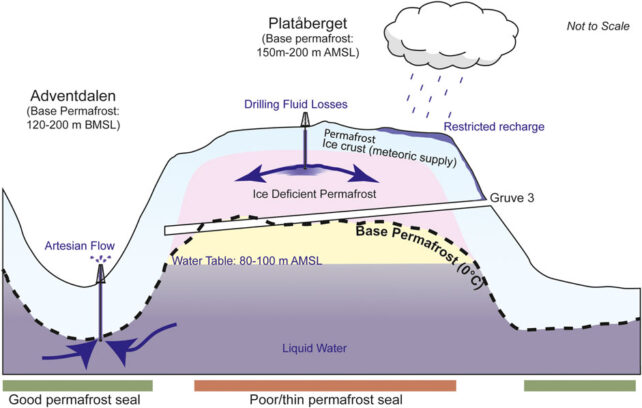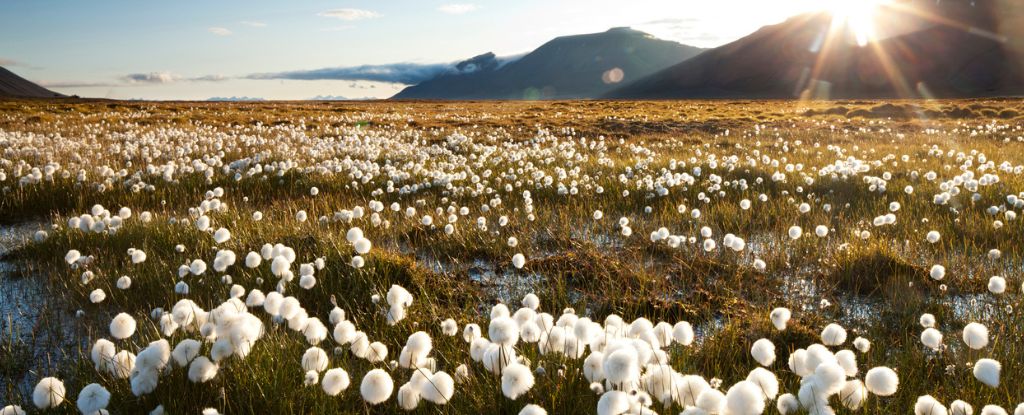Products You May Like
A methane monster, lurking beneath the Arctic’s frozen ground, is threatening to rear its ugly head.
Scientists don’t yet know how big the threat is or where it will strike first, but what is clear is that the Arctic’s permanently frozen soil, called permafrost, is melting, threatening to uncap huge amounts of an extremely potent fossil fuel from its icy prison.
If that occurs, it could seriously exacerbate the climate crisis, and yet most research to date has only scratched the surface of how much methane lies below the permafrost.
A new attempt to systematically analyze the distribution of deep methane in the Norwegian archipelago of Svalbard has revealed a scary new truth.
Looking at the data from eight exploration wells drilled by fossil fuel companies into the local permafrost, researchers in Norway found half contained substantial accumulations of methane gas.
The finding suggests that deep methane, two meters below the surface, under the frozen part of the ground, is not hard to find in the archipelago, and can easily migrate to the surface when ‘unlocked’. This probably goes for other parts of the Arctic, too, which have similar geological origins.
“All the wells that encountered gas accumulations did so by coincidence – by contrast, hydrocarbon exploration wells that specifically target accumulations in more typical settings had a success rate far below 50 percent,” explains geologist and lead author Thomas Birchall from the University Center in Svalbard.
“One anecdotal example is from a wellbore that was drilled recently near the airport in Longyearbyen. The drillers heard a bubbling sound coming from the well, so we decided to have a look, armed with rudimentary alarms designed for detecting explosive levels of methane – which were immediately triggered when we held them over the wellbore.”
Despite more than 50 years of drilling by fossil fuel companies, this is the first study to systematically analyze how much methane gas lies at the base of Svalbard’s permafrost.
At this point in time, there is no clear estimate that can predict how much methane is currently leaking from Arctic permafrost. There are simply too many unknowns.
The current research in Svalbard is based on data from a total of 18 hydrocarbon exploration wells, around 500 coal exploration bores, and 10 scientific boreholes.
The results highlight some key regions of concern.
While permafrost in Svalbard’s valleys seems to work as an effective sealant as a ‘cryogenic cap’, stopping deep methane from leaking into the atmosphere, highland areas form much weaker barriers, Birchall and his colleagues found.
That’s most likely because the permafrost in valleys is formed via the underlying water table, which creates a thick and impermeable seal of ice that can quickly heal itself from below. Here the researchers could detect increasing pressure as gas accumulated in the boreholes.
By contrast, highland areas have less water to draw from, leading to thinner and patchier ice on the frozen permafrost soil. When fossil fuel companies drill into this type of landscape, they tend to find less hydrocarbon gas, because it’s already migrated either through to another area of the permafrost through geological features or into the atmosphere, the researchers suspect.

Far more work needs to be done to properly understand how the Arctic’s permafrost keeps gases trapped, but the authors of the current study conclude that “the subsurface fluid systems in Svalbard are in a state of disequilibrium and widespread hydrocarbon migration is likely ongoing at present.”
For now, Birchell suspects the leakage of methane gas from below the permafrost is low, but as glaciers continue to retreat and permafrost melts, that could change, and fast.
The study was published in Frontiers.
